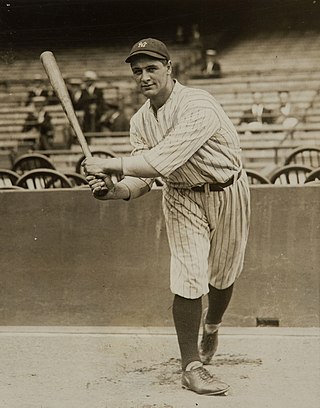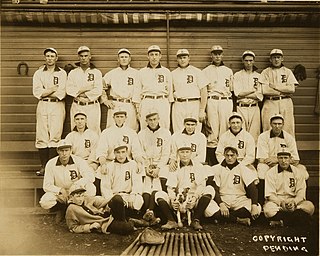Box score
The box score lists the line score as well as individual and team performance in the game. The statistics used are those recorded by the official scorer of each game.
The following box score is of a notable game in baseball history, Game 6 of the 1991 World Series.
Saturday, October 26, 1991 Hubert H. Humphrey Metrodome, Minneapolis, Minnesota Atlanta 0 0 0 0 2 0 1 0 0 0 0 – 3 9 1 Minnesota 2 0 0 0 1 0 0 0 0 0 1 – 4 9 0 Atlanta Braves ab r h rbi bb so po a Smith dh 3 1 0 0 1 0 0 0 Pendleton 3b 5 1 4 2 0 0 1 2 Gant cf 5 0 0 1 0 0 2 0 Justice rf 4 0 0 0 1 1 3 0 Bream 1b 4 0 1 0 1 0 12 2 Mitchell pr,lf 0 0 0 0 0 0 0 0 Hunter lf,1b 5 0 0 0 0 0 1 0 Olson c 5 0 0 0 0 1 6 0 Lemke 2b 4 1 2 0 0 0 2 3 Belliard ss 2 0 1 0 0 1 1 4 Gregg ph 0 0 0 0 0 0 0 0 Blauser ph,ss 2 0 1 0 0 1 1 3 Totals 39 3 9 3 3 4 30 14 FIELDING - Atlanta DP: 2. Bream-Belliard-Bream, Blauser-Lemke-Bream. E: Hunter (1). BATTING - Atlanta HR: Pendleton (2,5th inning off Erickson 1 on 1 out). HBP: Smith (1,by Erickson). GDP: Smith (1,off Willis). Team LOB: 7. BASERUNNING - Atlanta CS: Mitchell (1,2nd base by Aguilera/Harper). Minnesota Twins ab r h rbi bb so po a Gladden lf 4 1 0 0 1 0 1 0 Knoblauch 2b 5 1 1 0 0 0 4 1 Puckett cf 4 2 3 3 0 1 3 0 Davis dh 4 0 0 0 0 1 0 0 Mack rf 4 0 2 1 0 0 0 0 Leius 3b 3 0 2 0 0 0 3 2 Pagliarulo ph,3b 1 0 0 0 0 1 2 0 Hrbek 1b 4 0 0 0 0 1 11 1 Ortiz c 2 0 0 0 0 1 4 0 Harper ph,c 2 0 0 0 0 1 0 1 Gagne ss 4 0 1 0 0 0 5 6 Totals 37 4 9 4 1 6 33 11 FIELDING - Minnesota DP: 2. Gagne-Hrbek, Gagne. BATTING - Minnesota 2B: Mack (1,off Avery). 3B: Puckett (1,off Avery). HR: Puckett (2,11th inning off Leibrandt 0 on 0 out). SF: Puckett (1,off Avery). GDP: Hrbek (1,off Avery); Gladden (1,off Stanton). Team LOB: 5. BASERUNNING - Minnesota SB: Gladden (2,2nd base off Avery/Olson); Puckett (1,2nd base off Stanton/Olson). Pitchers Atlanta Braves IP H R ER BB SO HR BFP Avery 6.0 6 3 3 1 3 0 25 Stanton 2.0 2 0 0 0 1 0 7 Pena 2.0 0 0 0 0 2 0 6 Leibrandt (L, 0-2) 0.0 1 1 1 0 0 1 1 TOTALS 10 9 4 4 1 6 1 39 Leibrandt faced 1 batter in the 11th inning Minnesota Twins IP H R ER BB SO HR BFP Erickson 6.0 5 3 3 2 2 1 26 Guthrie 0.1 1 0 0 1 1 0 3 Willis 2.2 1 0 0 0 1 0 8 Aguilera (W, 1-1) 2.0 2 0 0 0 0 0 6 TOTALS 11 9 3 3 3 4 1 43 Erickson faced 1 batter in the 7th inning WP–Guthrie (1). HBP–Erickson (1,Smith). Inherited Runners - Scored: Guthrie 1-0; Willis 3-1. U–Ed Montague (NL), Don Denkinger (AL), Harry Wendelstedt (NL), Drew Coble (AL), Rick Reed (AL), Terry Tata (NL). T–3:46. A–55,155. |
(All game references below refer to the box score above.)
At the top of the box score, the editor of a publication may list the time, date, and/or place of the game. In the example, the stadium's name (the Hubert H. Humphrey Metrodome ) and city ( Minneapolis ) are listed.
The line score is always listed as part of the box score, usually near the top; it lists the total runs scored in each inning. (The Atlanta Braves scored two runs in the fifth inning and one in the seventh. The Minnesota Twins scored two runs in the first inning, one in the fifth, and one in the eleventh. ) Innings are normally grouped in sets of three for ease of reading. The team totals of runs, hits, and errors are listed last, after a separating character such as a dash. The actual score of the game is represented by the first column after the dash; (the Twins won this game four runs to three.)
The batting performances of each player in the game are grouped by team, with the visiting team listed first. Players are listed by last name in the order in which they were listed on the lineup card for the game, showing all players who enter the game at any point whether they make a plate appearance or not. Their fielding positions or batting roles are normally listed next to their last name. Typically only last names are used, unless two players with the same name appear in the game, in which case a distinctive first initial is also used. When a player switches fielding position, both positions are listed. ( Brian Hunter, in the sixth position of the Braves' batting order, started at left field but also served as the first baseman.) Substitute players are listed where they were placed in the batting order (in cases such as a double switch, not necessarily in the position of the player they replaced). Players who had an offensive role only are listed by that role: "ph" if they entered as a pinch hitter or "pr" if as a pinch runner. Substitutes who enter for defensive purposes and do not make a plate appearance have their fielding position shown and their batting line score shown as zeros. When a pinch hitter or pinch runner remains in the game, his fielding position is also listed. Some box scores will indent substitutes' names to indicate their spot in the order was the same as the non-indented starter's name above it; others will leave all names left-justified. (The Twins' Brian Harper pinch hit for Junior Ortiz and then remained in the game as catcher.)
Batting statistics are displayed to the right of the names in the lineup. At minimum are shown each batter's at bats, runs, hits, and runs batted in. Some box scores show other player statistics such as home runs, stolen bases, bases on balls, strikeouts, fielding errors, times left on base, home runs, or season batting average. At the bottom of the lineup are the team totals for each category.
Additional batting, fielding, and base-running statistics are listed in non-tabular form normally below the batting order summaries:
- E – errors (Brian Hunter committed an error, his first of the postseason series).
- DP – double plays (Each team turned two double plays .) Some box scores list the fielders involved.
- 2B – doubles ( Shane Mack hit a double, on a pitch from Steve Avery, his first in the postseason).
- 3B – triples (Kirby Puckett hit a triple, on a pitch from Avery, his first).
- HR – home runs (There were two home runs in the game. With one out, Terry Pendleton hit his second home run of the series, a home run with a man on base on a pitch from Scott Erickson in the fifth inning; with no outs, Puckett hit home run with no one on base in the eleventh inning, his second of the series, which won the game for Minnesota.)
- HBP – batters hit by a pitch ( Lonnie Smith was hit by a pitch from Erickson. It was his first time being hit in this series)
- SF – sacrifice fly (Puckett was credited with a sacrifice fly, hit off of Avery.)
- CS – caught stealing ( Keith Mitchell was thrown out by Brian Harper when attempting to steal second base on a pitch by Rick Aguilera.)
- SB – stolen base ( Dan Gladden stole his second base of the series on a pitch from Avery to Greg Olson; Puckett also stole second on a pitch from Mike Stanton--his first stolen base of the series.)
- TB – total bases (It's one for a single, two for a double, three for a triple and four for a home run. For example, if a batter has two singles, a double and a home run, this would be eight total bases.)
Below the batting orders and line score, the pitching summary is listed. Each pitcher used in the game is listed, along with any decision awarded to that pitcher. A pitcher can be credited with a win, a loss, a save, or a hold. Cumulative totals for pitching decisions are also shown, for either regular season or post-season play. To the right of each pitcher's name are recorded the total innings pitched, hits given up, runs allowed, earned runs allowed, bases on balls issued, and strikeouts made. More elaborate statistics may also be displayed, such as home runs allowed, pitch count, or the pitcher's cumulative earned run average.
Other pitching events are shown below the summary.
- WP – wild pitch thrown ( Mark Guthrie threw one wild pitch, his first of the series.)
- HBP – hit by pitch, the reverse of the listing from the batting summary (Erickson hit Lonnie Smith with a pitch, his first hit batsman of the series).
Other overall game information is shown at the bottom of the box score.
- U – umpire crew (Six umpires worked this game, listed by umpiring position. The home plate umpire is listed first, then the umpires for each base in order, then the left and right field umpires, if any. In inter-league play, league affiliations were also shown, but, with the merger of the major-league umpiring staffs prior to the 2000 season, these references have been eliminated .)
- T – time of the game, not counting rain delays or light failure (The game was played in three hours and forty-six minutes.)
- A – paid attendance (55,155 tickets were sold for this game.)
Most box scores also give the temperature, weather, and wind speed/direction.
Other events not shown in the example but recorded in most box scores include sacrifice hits ("S"), triple plays ("TP"), balks ("BK"), blown saves ("BS"), and passed balls ("PB"). Many box scores, to save space, do not list any categories where none of that event occurred in the game. Others will list the category followed by " – None".
In a baseball game, the number of plate appearances for each team must be equal to the number of batters put out, scored, and left on base. A box score is in balance (or proved) when the total of the team's times at bat, bases on balls received, hit batters, sacrifice bunts, sacrifice flies and batters awarded first base because of interference or obstruction equals the total of that team's runs, players left on base and the opposing team's putouts. In other words, the box score is accounting for the number of batters and what became of them (scored, left on base, or put out). If a box score is unbalanced, then there is a logical contradiction and thus an error somewhere in the box score.
Early box scores
The first box scores tended to be vaguely related to cricket scorekeeping, in that only two offense-oriented figures were presented for each batter: "O" and "R", meaning "number of times put out" and "number of runs scored", respectively.
As fan interest in all aspects of the game increased, the box scores were revised and expanded to include the offensive categories At-Bats, Runs, Hits and sometimes Total Bases; and the defensive categories Put-Outs, Assists and Errors for each batter, as well as a statistical summary underneath the lineups listing extra-base hits, innings pitched, earned runs, etc.
In baseball, if the team scheduled to bat last is leading after 8½ innings, there is no turn at bat for that team, as it would not affect the outcome of the game, so the last of the ninth is usually marked with an "X" as a placeholder in the line score. Some newspapers (and some scoreboards) in those days showed the home team in the top line, resulting in the peculiarity of an "X" placed in what appeared to be the "top" of the ninth. This practice was a carryover from the time when the home team had the choice of whether to bat first or last, another similarity with cricket. Teams would often choose to bat first, counting on their ability to "get the jump" on the visiting team (as with football teams that win the coin toss), but the potential for the visitors scoring the winning run in the last of ninth was clearly an unsatisfying situation for the fans. The rules eventually required the home team to bat last, but the practice of listing the home team first was carried on for a while, in some places, even when it did not square with the actual events of the game.
The offensive statistic Runs Batted In was developed in the early 1900s, and was soon being carried in the lineup portion of the box scores.
As relief pitching became more common, a separate "lineup" section for the pitchers was developed, carrying individual Innings Pitched; the number of Hits, Runs, Earned Runs, and Bases on Balls allowed; and Strike-Outs achieved.
By the late 1960s or so, in the interest of space, most newspapers dropped the defensive stats from the lineups, just carrying the list of errors (if any) in the game summary. For a special event, such as World Series play (especially if a local team is involved), newspapers still often print the wider version of the box score.
Baseball statistics refers to a variety of metrics used to evaluate player and team performance in the game of baseball.
In baseball, an earned run is any run that was fully enabled by the offensive team's production in the face of competent play from the defensive team. Conversely, an unearned run is a run that would not have been scored without the aid of an error or a passed ball committed by the defense.

In baseball, a home run is scored when the ball is hit in such a way that the batter is able to circle the bases and reach home plate safely in one play without any errors being committed by the defensive team. A home run is usually achieved by hitting the ball over the outfield fence between the foul poles without the ball touching the field.

Softball is a sport similar to baseball, and it is played with a larger ball on a smaller field and with only underhand pitches permitted. Softball is played competitively at club levels, the college level, and the professional level. The game was first created in 1887 in Chicago by George Hancock.

In the game of baseball, the official scorer is a person appointed by the league to record the events on the field, and to send the official scoring record of the game back to the league offices. In addition to recording the events on the field such as the outcome of each plate appearance and the circumstances of any baserunner's advance around the bases, the official scorer is also charged with making judgment calls that do not affect the progress or outcome of the game. Judgment calls are primarily made about errors, unearned runs, fielder's choice, the value of hits in certain situations, and wild pitches, all of which are included in the record compiled. This record is used to compile statistics for each player and team. A box score is a summary of the official scorer's game record.

In baseball, an intentional base on balls, usually referred to as an intentional walk and denoted in baseball scorekeeping by IBB, is a walk issued to a batter by a pitcher with the intent of removing the batter's opportunity to swing at the pitched ball. A pitch that is intentionally thrown far outside the strike zone for this purpose is referred to as an intentional ball.

In baseball, the batting order or batting lineup is the sequence in which the members of the offense take their turns in batting against the pitcher. The batting order is the main component of a team's offensive strategy. In Major League Baseball, the batting order is set by the manager, who before the game begins must present the home plate umpire with two copies of his team's lineup card, a card on which a team's starting batting order is recorded. The home plate umpire keeps one copy of the lineup card of each team, and gives the second copy to the opposing manager. Once the home plate umpire gives the lineup cards to the opposing managers, the batting lineup is final and a manager can make changes only under the Official Baseball Rules governing substitutions. If a team bats out of order, it is a violation of baseball's rules and subject to penalty.

Throughout the history of baseball, the rules have frequently changed as the game continues to evolve. A few common rules most professional leagues have in common is that four balls is a base on balls, three strikes is a strikeout, and three outs end a half-inning.

In baseball, a cleanup hitter is the fourth hitter in the batting order. The cleanup hitter is traditionally the team's most powerful hitter. His job is to "clean up the bases", i.e., drive in base runners.

In baseball, batting is the act of facing the opposing pitcher and trying to produce offense for one's team. A batter or hitter is a person whose turn it is to face the pitcher. The three main goals of batters are to become a baserunner, to drive runners home or to advance runners along the bases for others to drive home, but the techniques and strategies they use to do so vary. Hitting uses a motion that is virtually unique to baseball and its fellow bat-and-ball sports, one that is rarely used in other sports. Hitting is unique because it involves rotating in the horizontal plane of movement, unlike most sports movements which occur in the vertical plane.

The 1987 World Series was the championship series of Major League Baseball's (MLB) 1987 season. The 84th edition of the World Series, it was a best-of-seven playoff played between the American League (AL) champion Minnesota Twins and the National League (NL) champion St. Louis Cardinals. The Twins defeated the Cardinals four games to three to win the Series, their first in Minnesota and the first since last winning as the Washington Senators in 1924. Twins pitcher Frank Viola was named as the 1987 World Series MVP.

The 1991 World Series was the championship series of Major League Baseball's (MLB) 1991 season. The 88th edition of the World Series, it was a best-of-seven playoff played between the American League (AL) champion Minnesota Twins (95–67) and the National League (NL) champion Atlanta Braves (94–68). The Twins defeated the Braves four games to three to win the championship, their second in Minnesota and third overall. The series was also unique because of the standings of the two participating teams in the previous season: both finished the 1990 season in last place; before 1991, no league champion had ever finished the previous season in last place.

Baseball scorekeeping is the practice of recording the details of a baseball game as it unfolds. Professional baseball leagues hire official scorers to keep an official record of each game, but many fans keep score as well for their own enjoyment. Scorekeeping is usually done on a printed scorecard and, while official scorers must adhere precisely to one of the few different scorekeeping notations, most fans exercise some amount of creativity and adopt their own symbols and styles.
This is an alphabetical list of selected unofficial and specialized terms, phrases, and other jargon used in baseball, along with their definitions, including illustrative examples for many entries.

The 1907 Detroit Tigers won the American League pennant with a record of 92–58, but lost to the Chicago Cubs in the 1907 World Series, four games to none. The season was their seventh since they entered the American League in 1901.
The 1962 National League tie-breaker series was a best-of-three playoff series that extended Major League Baseball's (MLB) 1962 regular season to determine the winner of the National League (NL) pennant. The games were played from October 1 to 3, 1962, between the Los Angeles Dodgers and the San Francisco Giants. The Giants won the series, two games to one. The first game took place at Candlestick Park and the second and third were played at Dodger Stadium. The tie-breaker series was necessary after both teams finished the season with identical win–loss records of 101–61. The Dodgers won a coin flip late in the season, which gave them home field advantage. The series was broadcast nationally by NBC television, with Bob Wolff, George Kell, and Joe Garagiola announcing, and NBC Radio, with Al Helfer and George Kell announcing.

The 2012 Japan Series was the 63rd edition of Nippon Professional Baseball's (NPB) championship series known colloquially as the Japan Series. The best-of-seven playoff was won by the Central League champion Yomiuri Giants in six games over the Pacific League champion Hokkaido Nippon-Ham Fighters. It was the Giants' 22nd Japan Series title, second in the last four years. The series began on Saturday, October 27, 2012 and ended on Saturday, November 3, 2012 at the Tokyo Dome in Bunkyō, Tokyo. Giants starting pitcher Tetsuya Utsumi, who was the winning pitcher in Games 1 and 5, was named the Japan Series Most Valuable Player (MVP). Giants players Shinnosuke Abe, Hisayoshi Chono and John Bowker were also recognized with Outstanding Player awards.

On May 26, 1959, Harvey Haddix of the Pittsburgh Pirates pitched a perfect game for 12 innings against the Milwaukee Braves, but lost the no-hitter and the game in the 13th inning. The game was played at Milwaukee County Stadium.














